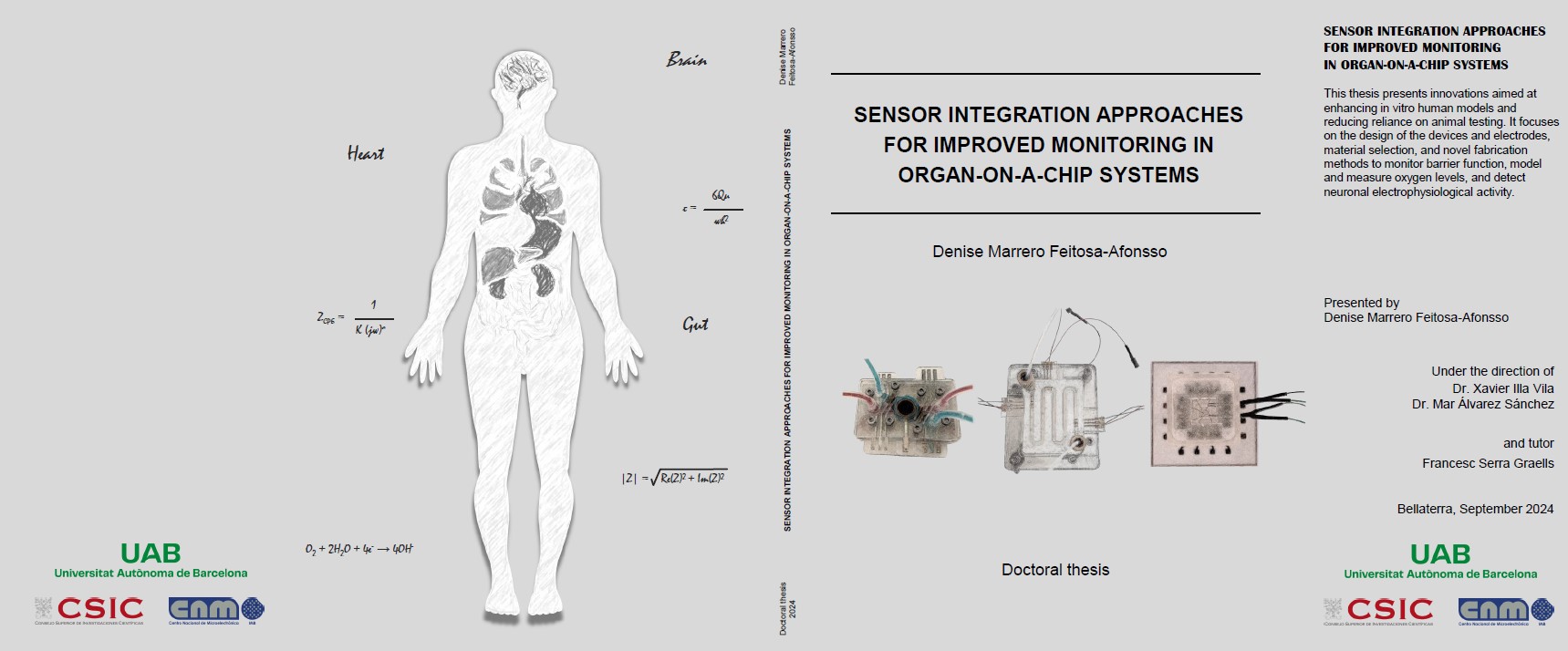Defensa de tesi de Denise Marrero
Defensa de tesi de Denise Marrero Feitosa-Afonsso el pròxim 25 de Novembre a les 10:30h. Sala de Graus de l'Escola d'Enginyeria.

Doctorand: Denise Marrero Feitosa-Afonsso.
Títol: Sensor integration approaches for improved monitoring in organ-on-a-chip systems
Directors: Xavier Illa Vila i Maria del Mar Álvarez Sánchez.
Tutor: Francesc Serra Graells.
Data i hora lectura: 25/11/2024, 10:30h.
Lloc lectura: C1/070-1 Sala de Graus (Sala d'actes, reunions i juntes) Facultat de Ciències i Biociències.
Programa de Doctorat: Enginyeria Electrònica i de Telecomunicació.
Departament on està inscrita la tesi: Departament de Microelectrònica.
Abstract
The limitations of animal and in vitro models to accurately predict human responses pose a major challenge in biomedical research, particularly impacting disease modeling and drug development. Organs-on-a-chip (OoCs) devices that culture cells in environments closely mimicking human physiology and pathophysiology offer a potential solution to bridge the gap between human biology and traditional models. The purpose of OoC technology is not to replicate an entire organ but to reproduce key elements of its functionality in a microscale system. Current readout systems in OoC devices often rely on traditional methods that are labor-intensive and involve data processing that lags behind real-time events. These methods frequently require the termination of the experiment for analysis, leading to delays in data access, increased time and costs, limited real-time insights, and a higher likelihood of manual errors. Integrating sensing elements into OoC devices addresses these challenges by enabling automated quantitative data acquisition and real-time information for in-situ decision-making, thereby improving both efficiency and accuracy in the experimental process. Despite these benefits, many OoC systems lack integrated sensing capabilities due to the technical challenges of sensor integration. This gap persists due to the complexity of integrating sensors, which requires specialized expertise in microfabrication techniques and access to sophisticated instrumentation.
This thesis presents innovations aimed at enhancing in vitro human models and reducing reliance on animal testing. It focuses on the design of the devices and electrodes, material selection, and novel fabrication methods to monitor barrier function, model and measure oxygen levels, and detect neuronal electrophysiological activity. First, a microfluidic device with semitransparent electrodes was designed to monitor the integrity of barrier-forming tissues. The semitransparent electrodes allow to match the electrode area with the cell culture area for accurate measurements of barrier function while allowing optical access simultaneously. Second, a microfluidic device with adjustable oxygen scavenging capacity with integrated oxygen sensors was developed to better mimic the oxygen microenvironment of tissues for OoC applications. The sensor integration protocol was developed using inkjet printing technologies and can be adapted to various materials that are compatible with OoC technology. Third, the thesis introduces multi-sensing platforms that integrate multiple electrodes to enhance data acquisition from OoC systems, allowing for more detailed and robust information collection. This includes an OoC device that integrates both barrier function and oxygen level monitoring. Additionally, an origami-inspired platform was developed to sense the electrophysiological activity of neuronal 3D tissues while also monitoring barrier function. This thesis demonstrates the potential of integrating electrodes into advanced OoC devices to deepen our understanding of physiological processes and highlights the advantages of OoC over traditional models.